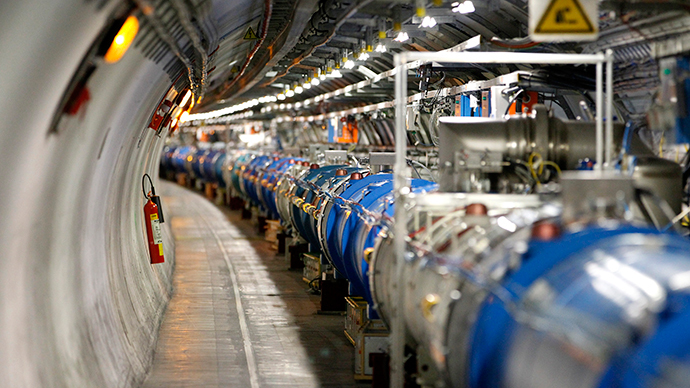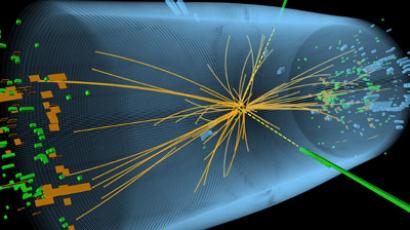2 new subatomic particles found by CERN scientists

CERN’s Large Hadron Collider scientists have discovered two new subatomic particles each made from three quarks bound together by the strong force. They were predicted to exist by the Standard Model of particle physics.
Officials at the lab on the French-Swiss border known by its French acronym CERN announced the discovery in a statement Wednesday and submitted a paper reporting the finding to Physical Review Letters.
The particles are part of the baryon family and are made from three quarks bound together - one beauty (b), one strange (S), and one down (d) quark - and are within the so-called “Standard Model” theory, which explains the building blocks of matter.
The particles are known as Xi_b'- and Xi_b*- and although scientists had predicted their existence they had never actually been seen before. A related particle called Xi_b*0 was found in 2012.
“Nature was kind and gave us two particles for the price of one. The Xi_b'- is very close in mass to the sum of its decay products: if it had been just a little lighter, we wouldn't have seen it at all using the decay signature that we were looking for,” said Matthew Charles, of the LPNHE laboratory at Paris VI University, a CERN collaborator.
Scientists have been crashing protons into each other in the 17 kilometer tunnel at CERN to try and find out more about the universe and the tiny particles that make it.
These new particles are more than six times the size of the protons that have been smashed together by scientists.This is because they contain the b quarks which are more than six times heavier than the proton.
However, the particles are more than just the sum of their parts, CERN’s Cian O'Luanaigh wrote adding that “their mass also depends on how they are configured. Each of the quarks has an attribute called ‘spin’.”
As a result the Xi_b*-is a little heavier.
Steven Blusk of Syracuse University in New York said the research was “an exciting result.”
"Thanks to LHCb's excellent hadron identification, which is unique among the LHC experiments, we were able to separate a very clean and strong signal from the background. It demonstrates once again the sensitivity and how precise the LHCb detector is,” he said.
As well as their masses, scientists have also studied their widths –which depends on how unstable they are – and their relative production rates. The results match predictions based on the Quantum Chromodynamics (QCD) theory.
QCD is part of the Standard Model of particle physics, which describes the fundamental particles of matter, the forces between them and how they interact.
Patrick Koppenburg, LHCb’s physics coordinator Patrick Koppenburg from Nikhef Institute in Amsterdam, said the study could help identify “anything new and unexpected in the future” and differentiate that from the effects of the “Standard Model.”
“If we want to find new physics beyond the Standard Model, we need first to have a sharp picture. Such high precision studies will help us to differentiate between Standard Model effects and anything new or unexpected in the future,” he said.













